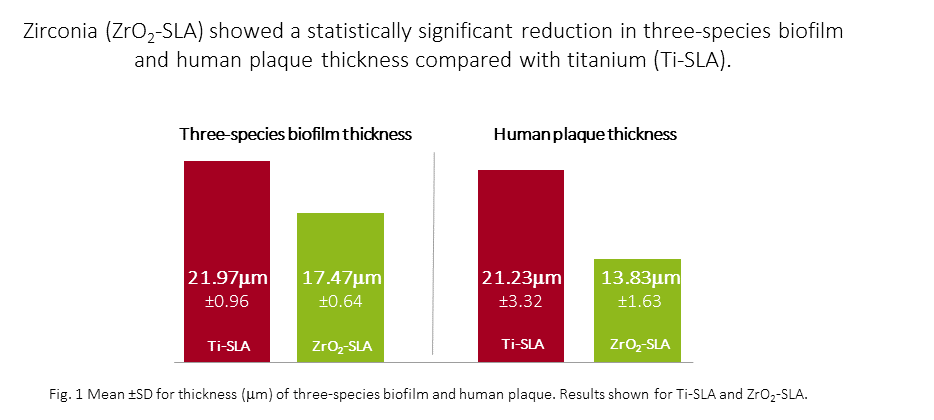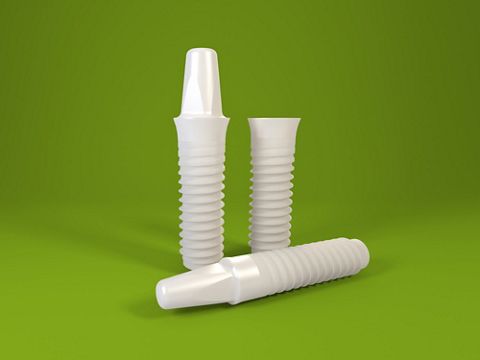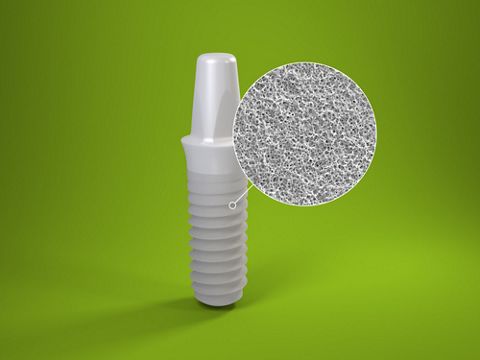Less plaque attachment around zirconia surfaces compared to titanium surfaces
An important factor for long-term implant success.
Biofilm formation and resulting peri-implant infections are a major concern regarding early and late implant failures. It has been hypothesized that the type of implant material can influence biofilm formation and plaque accumulation. The aim of the present study, which has been recently published in the Journal of Periodontology, was to compare biofilm formation on zirconia and titanium implant surfaces.
Statistically significant reduction of biofilm
Three-species biofilm and human plaque samples were applied to zirconia and titanium grade 4 discs and assessed after 72 hours of incubation in an anaerobic flow chamber model. The reference strains for the peri-implantitis related three-species biofilm consisted of Streptococcus sanguinis (an initial colonizer creating pre-conditions for the adhesion of periodontal pathogens), Porphyromonas gingivalis (a periodontal pathogen that can induce peri-implant mucositis and peri-implantitis) and Fusobacterium nucleatum (a necrotizing pathogen related to peri-implantitis infections and enhanced pathogenic biofilm formation). The human plaque biofilm samples were derived from four patients with a Plaque Index of 1 and higher. After incubation for 72h in the anaerobic flow chamber, biofilm thickness, mass and metabolism were assessed. Interestingly, statistically significant less biofilm formation was reported around zirconia surfaces compared to titanium surfaces. Zirconia showed a statistically significant reduction in the three-species biofilm thickness compared to titanium discs (Fig. 1a); Human plaque optical density analysis showed statistically significant reduction in human biofilm mass on zirconia compared with titanium. Additionally, zirconia revealed a statistically significant reduction in human plaque thickness (Fig. 1b).

Conclusion by the authors
“… not only surface roughness or surface hydrophilicity might be important factors for biofilm formation, but also material composition – metals compared to ceramics – suggesting a reduced disposition for peri-implant plaque formation and subsequent potential peri-implant infections on zirconia compared to titanium implant surfaces.“ Further in vivo studies are needed to confirm these experimental in-vitro data. However, the study provides new insights on biofilm formation around different dental materials.
The full study with all details can be found here.
About the Straumann® PURE Ceramic Implant System
The Straumann® PURE Ceramic Implant System is the result of more than 12 years of relentless research and development until the ceramic implants complied with our premium quality standards. They combine Swiss quality and precision, strength, clinical success and flexible treatment protocols in an innovative solution that helps you to meet the needs of your patients. Learn more: pure.straumann.com


